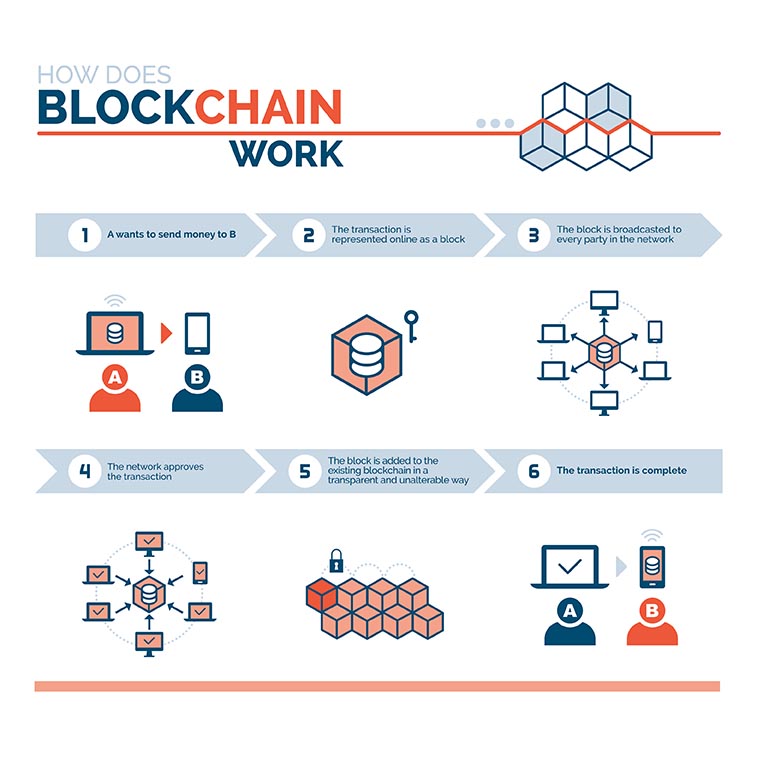
What is Cryptocurrency?
Bitcoin. Ether. Dogecoin. Blockchain. Digital wallet. You may have heard these terms before, but for many, the words are just lingo for a high-tech, mysterious world of cryptocurrency they know little about. Elon Musk tweets about it. Tech companies like Microsoft accept it as payment. As cryptocurrency inches its way into our awareness, it inches its way into commerce. But do we really understand anything about it?
With crypto becoming more accepted as a form of payment by mainstream businesses, questions are bound to arise about how it will be used for commerce in the future. You can be sure your Strauss Troy attorneys will stay on top of this issue. But for those bewildered by the cryptocurrency market, exactly what is cryptocurrency and how does it work?
Distributed Ledger
Simply put, cryptocurrency is a digital system of money that is decentralized, meaning there is no central bank through which it is exchanged. The decentralized nature of cryptocurrency makes it harder to tamper with or counterfeit.
The main difference between cryptocurrency and the “regular” or fiat currency we deal with daily is the technology behind it: a distributed ledger. The Federal Reserve issues the U.S. dollar, which we typically access through a bank. Transactions through that bank are recorded on the bank’s ledger: if you take $100 out of the bank’s ATM today, that amount is subtracted from your account on your bank’s ledger.
With cryptocurrency, all transactions are duplicated and recorded across the entire network of computers on the system. This distributed ledger system means that once transaction data is recorded, it’s very difficult to change it, because it must be changed across the entire network. One specific type of distributed ledger employed by some cryptocurrencies uses an ever increasing series of records, called “blocks” that are cryptographically linked together. This type of distributed ledger frequently used with cryptocurrency is called blockchain.
To understand how cryptocurrency works, you need to understand some of the elements that make it work.
Elements of Cryptocurrency
Blockchain

Blockchain is the distributed ledger system that makes cryptocurrency decentralized and is a way to record information that is harder to tamper with or hack. Think of it as a chain of blocks that has certain information on it, like a digital timestamp of the transaction. It’s stored on a network of multiple computers that are all in different locations. (Click here for a video illustrating blockchain.)
Mining
One way to get cryptocurrency is to buy it. Another way to get some types is to mine it. Since there is no central bank that prints new cryptocurrency, miners “dig” up new bitcoin and release it into circulation through a process called mining. Unlike mining for gold, cryptocurrency mining is a high-tech process of solving mathematical work that includes:
- Verifying and validating new transactions and ordering them into a new block.
- Adding the new block to the ledger’s blockchain.
- Broadcasting the new block to the cryptocurrency network.
Miners who do this are rewarded with cryptocurrency. It takes a sophisticated computer with graphics processing power and state of the art software to “unearth” cryptocurrency. Those who mine cryptocurrency usually sell what they get, releasing the currency into circulation. And unlike gold, the supply of cryptocurrency isn’t influenced by the amount of mining.
Non-Fungible Tokens
A non-fungible token (NFT) is a token that indicates ownership of a unique item and can track current ownership and selling price of that item. Non-fungible means that item cannot be replaced by something else because it is unique—it’s like exchanging da Vinci’s Mona Lisa for Starry Night. While not cryptocurrency, NFTs use blockchain technology and can be purchased using cryptocurrencies like Bitcoin. NFTs generally use something called smart contracts, technology that automates the execution of an agreement, (like a type of Ethereum account) to create the tokens.
Non-fungible tokens are increasingly being used for original digital creative work such as drawings, music and videos. While digital work can be easily reproduced, it’s still not the original work, much like a print of a Picasso is not an original Picasso. NFTs provide something that cannot be copied: proof of ownership or a work. (Click here for a video illustrating NFTs.) In the world of art collecting and cryptocurrency, NFTs can be worth up to millions of dollars.
In Part II, we’ll discuss getting involved in the cryptocurrency market, ways to “store” cryptocurrency, and the risks inherent in the market.

